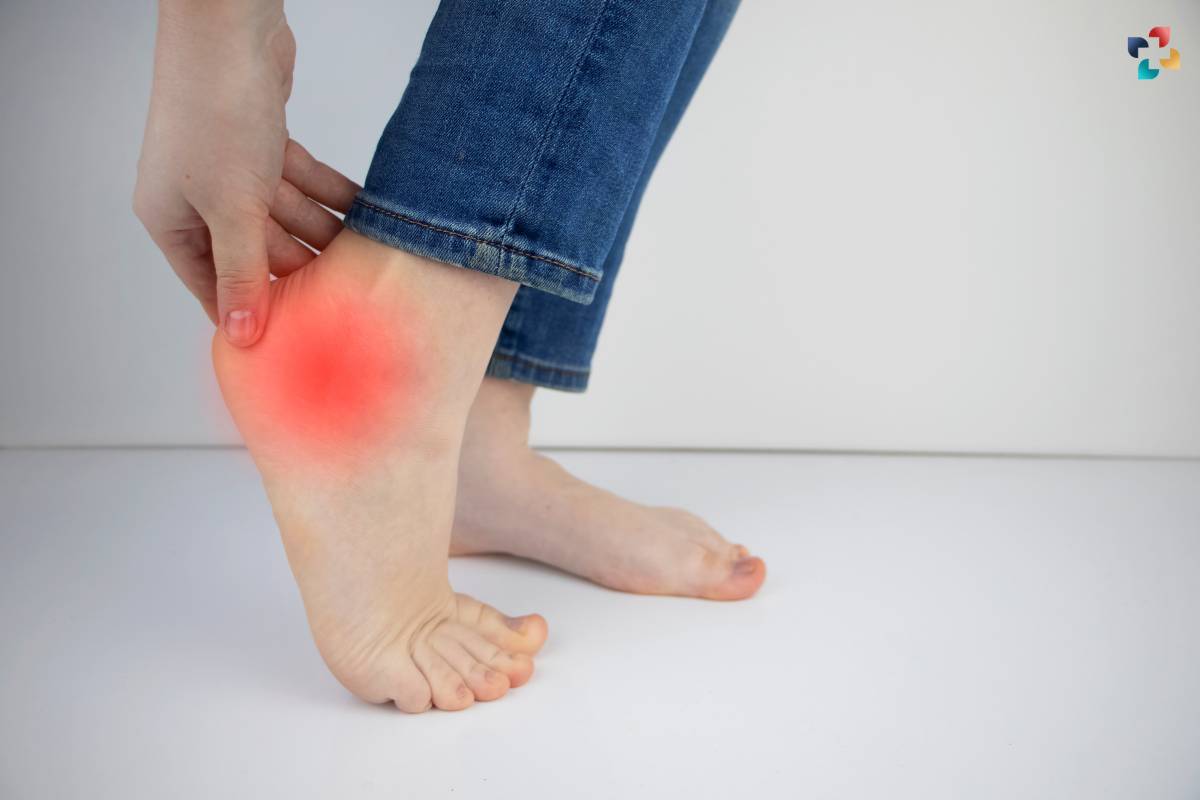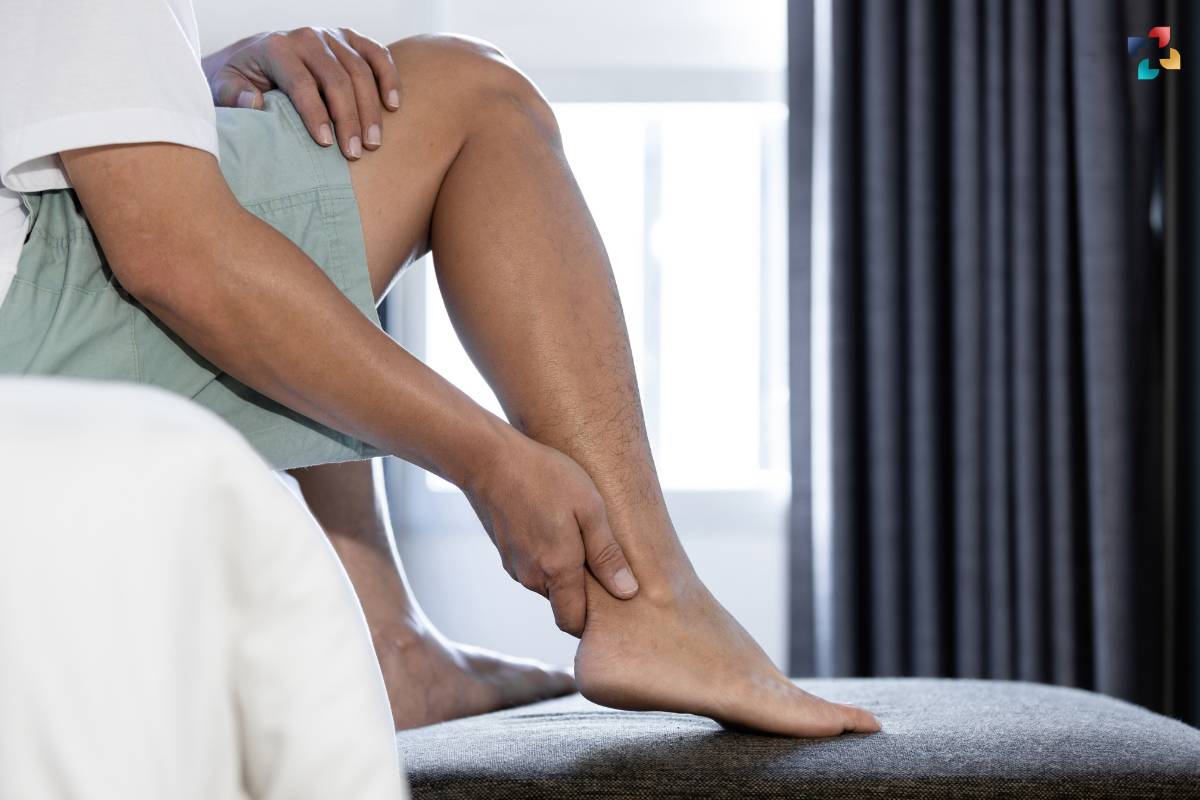Peroneal tendonitis is a common condition characterized by inflammation or irritation of the peroneal tendons, which run along the outside of the lower leg and help stabilize the ankle. This condition can cause pain, swelling, and discomfort, making everyday activities challenging. Understanding the causes, symptoms, and treatment options for peroneal tendonitis is crucial for effective management and prevention of complications.
Here are the causes, symptoms, and treatment options for peroneal tendonitis:
Causes of Peroneal Tendonitis:
Peroneal tendonitis often develops due to overuse or repetitive stress on the peroneal tendons, leading to micro-tears and inflammation. Some common causes and risk factors include:
1. Repetitive Activities
Activities that involve repetitive ankle movements, such as running, jumping, or walking on uneven surfaces, can strain the peroneal tendons and contribute to tendonitis.
2. Ankle Instability
Weakness or instability in the ankle joint can increase the risk of peroneal tendonitis, as it places excessive stress on the tendons during movement.
3. Poor Foot Biomechanics
Abnormal foot biomechanics, such as high arches or overpronation, can alter the alignment of the ankle and foot, leading to increased strain on the peroneal tendons.
4. Inadequate Footwear
Wearing shoes that lack proper support or cushioning can exacerbate peroneal tendonitis by increasing pressure on the tendons and causing friction.
5. Previous Injuries

Previous ankle injuries or trauma can weaken the peroneal tendons and make them more susceptible to inflammation and injury.
Symptoms of Peroneal Tendonitis:
The symptoms of peroneal tendonitis can vary depending on the severity of the condition, but common signs may include:
- Pain along the outside of the ankle, especially during physical activity or when bearing weight.
- Swelling and tenderness along the course of the peroneal tendons, typically behind the lateral malleolus (outer ankle bone).
- Stiffness or restricted range of motion in the ankle joint.
- Weakness or instability in the ankle, particularly when walking or standing on uneven surfaces.
- Audible snapping or popping sensations around the ankle joint during movement.
Diagnosis and Treatment of Peroneal Tendonitis:
Diagnosing peroneal tendonitis typically involves a thorough physical examination, including an assessment of the ankle’s range of motion, strength, and stability. Imaging studies such as X-rays, ultrasound, or magnetic resonance imaging (MRI) may be ordered to confirm the diagnosis and evaluate the extent of tendon damage.
Treatment options for peroneal tendonitis aim to reduce pain and inflammation, promote healing, and prevent recurrence. Depending on the severity of the condition, treatment may include:
Rest and Immobilization: Resting the affected ankle and avoiding activities that exacerbate symptoms can help alleviate pain and allow the tendons to heal. Immobilization with a brace, splint, or walking boot may be recommended to protect the ankle during the recovery process.
1. Ice Therapy
Applying ice packs or cold therapy to the affected area can help reduce pain and inflammation. Ice should be applied for 15-20 minutes several times a day, especially after physical activity or exercise.
2. Physical Therapy
A structured physical therapy program may be prescribed to strengthen the muscles around the ankle, improve flexibility, and enhance proprioception (balance and coordination). Therapeutic exercises, stretching, and manual techniques can help restore normal function and prevent future injuries.
3. Non-steroidal anti-inflammatory Drugs (NSAIDs)

Over-the-counter or prescription NSAIDs such as ibuprofen or naproxen may be recommended to alleviate pain and reduce inflammation. However, these medications should be used with caution and under the guidance of a healthcare professional, as long-term use can have adverse effects.
4. Orthotic Devices
Custom orthotic inserts or shoe modifications may be prescribed to correct foot biomechanical issues and provide additional support to the ankle. These devices can help distribute pressure evenly and reduce strain on the peroneal tendons during weight-bearing activities.
5. Corticosteroid Injections
In cases of severe pain or inflammation, corticosteroid injections may be administered directly into the affected tendon sheath to provide temporary relief. However, these injections are typically reserved for short-term use due to the risk of tendon weakening or rupture with repeated injections.
6. Surgery
In rare cases where conservative treatments fail to provide relief, surgical intervention may be considered. Surgical options for peroneal tendonitis may include tendon debridement (removal of damaged tissue), tendon repair, or tendon transfer procedures to address underlying structural abnormalities and restore function to the ankle.
Prevention of Peroneal Tendonitis
Preventing peroneal tendonitis involves taking proactive measures to reduce the risk of injury and maintain optimal ankle health. Some preventive strategies include:
1. Gradual Progression
Gradually increasing the intensity and duration of physical activity can help prevent overuse injuries and allow the tendons to adapt to increased stress gradually.
2. Proper Footwear

Wearing supportive and properly fitting shoes for specific activities can help minimize strain on the peroneal tendons and provide adequate cushioning and stability.
3. Strengthening Exercises
Incorporating exercises that target the muscles around the ankle, including the peroneal muscles, can help improve strength, stability, and proprioception, reducing the risk of tendon injury.
4. Flexibility Training
Regular stretching and mobility exercises for the ankle joint can help maintain flexibility and range of motion, preventing stiffness and reducing the risk of tendon strain during movement.
5. Injury Rehabilitation
Proper rehabilitation following an ankle injury or surgery is essential for restoring normal function, strength, and flexibility to the ankle joint and surrounding tissues, reducing the risk of recurrent injury.
Conclusion
Peroneal tendonitis is a common condition that can cause significant pain and discomfort, impacting daily activities and mobility. Understanding the causes, symptoms, and treatment options for peroneal tendonitis is essential for timely diagnosis and effective management. By implementing preventive measures and seeking appropriate medical care, individuals can reduce the risk of developing peroneal tendonitis and maintain optimal ankle health and function. If you experience persistent ankle pain or discomfort, consult a healthcare professional for evaluation and treatment recommendations tailored to your specific needs.
FAQs
1. What are the common symptoms of peroneal tendonitis?
Common symptoms include pain along the outside of the ankle, swelling, tenderness behind the outer ankle bone, stiffness, weakness, and audible snapping or popping sensations during movement.
2. What causes peroneal tendonitis?
Peroneal tendonitis is often caused by overuse or repetitive stress on the peroneal tendons, weak ankle stability, poor foot biomechanics, inadequate footwear, and previous ankle injuries or trauma.
3. How is peroneal tendonitis diagnosed?
Diagnosis typically involves a physical examination, assessment of ankle range of motion, strength, and stability, and imaging studies such as X-rays, ultrasound, or magnetic resonance imaging (MRI) to confirm the diagnosis and evaluate the extent of tendon damage.
4. What are the treatment options for peroneal tendonitis?
Treatment may include rest, immobilization, ice therapy, physical therapy, non-steroidal anti-inflammatory drugs (NSAIDs), orthotic devices, corticosteroid injections, and in severe cases, surgical intervention.
5. Can peroneal tendonitis be prevented?
Yes, preventive measures include gradual progression of physical activity, wearing proper footwear, performing strengthening and flexibility exercises, and ensuring proper rehabilitation following ankle injuries or surgeries to reduce the risk of developing peroneal tendonitis.











